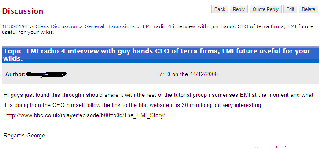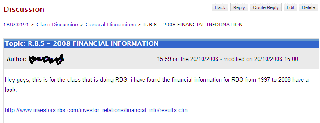Reconsidering the Teaching of Economics to Students on Business Programmes
Munacinga Simatele
Senior Lecturer, Economics, University of Hertfordshire
Published July 2010
Background
Teaching economics to students on business programmes can be quite challenging. In part this stems from the fact that economics teaching appears to have levels of abstraction whereas other modules such as marketing, finance and human resource management are seen as practical modules that relate to functions that businesses actually carry out every day. Problems may also arise due to skills differences between students on business programmes and those on economics programmes.
The teaching of economics has been compounded at the University by large class sizes which have been as high as 900 in one first year cohort. With such numbers, the lecture method has remained the most commonly used way of delivering learning. In the past few years, these traditional lectures have been interspersed with student activities, so that a workshop type of teaching has been used. This, however has not improved student results significantly.
The failure rates on introductory economics programmes have traditionally been higher amongst non-economics students relative to economics students within the university. The project was centred on redesigning the delivery of microeconomics to business students and marketing students in a way that helps them see economics as a practical module, in a sense similar to the way they see principles of marketing for example.
Several aspects of learning were incorporated into redesigning the module. The ideas behind the redesign were based on informal discussion with my students in previous years and identifying what they found difficult about understanding economics. The main areas addressed included
- Inability to grasp abstraction and the idea of assumptions- for example, the class would spend long hours debating the concept of ceteris paribus, where students could not grasp the idea that you can assume that all factors can be held constant to allow static analysis
- General aversion towards numbers and figures
- Difficult in seeing the links between theory and practical application
- Too much to learn in short period of time- a number of students felt that without an economics background, the amount of concepts that they had to cover was too much. Most of them would not use most of these concepts for the rest of their undergraduate life unless they chose to do more economics modules.
The new approach
With these issues in mind, the module was redesigned around the pedagogy of threshold concepts and inquiry based learning. Threshold concepts help in addressing the problem of the crowded curriculum. The use of threshold concepts suggests that instructors avoid teaching to the textbook, which is the most common way of delivering learning. A core text book is selected prior to the start of the module and a select number of essential topics are covered; students are expected to widen their learning by referring to the textbook after the lectures. In some cases, more resources are provided via the university VLE.
The use of threshold concepts is rather radical in the sense that we move away from this planned standard type delivery of what are seen as basic principles in economics to teaching only those concepts that are seen as core to the subject. The literature suggests that once learnt, these concepts are often irreversible so that learners are unlikely to forget them. It therefore seems to be a very good way of developing understanding of a subject that otherwise is perceived as difficult for the students.
The selection of threshold concepts was difficult. It was decided that the best way to select topics would be to consider what the students would be expected to apply their knowledge of economics to. To this end, technical details were minimised and used only when they aided the understanding of the concept. The concepts selected were
- the market (what a market is and its nature)
- the firm (why firms exist and why the profit motive is important to them hence the importance of generating higher revenues relative to costs)
- externalities (the governance of the firm and why it is essential that firms are not left to operate without some form of control hence leading to discussion of market failures, without the technical detail and a brief discussion on corporate social responsibility)
- The macro environment (the idea that firms rely on the state of the macro environment to determine whether they should produce more or less hence leading to a non-technical discussion of the ideas of business cycles, inflation and interest rates)
- The international environment (the idea that firms now operate in a very globalised world and even if they do not export, they might be using imported inputs, or they sell to a consumer group that can access international markets hence increasing competition leading to a non-technical discussion of exchange rates and their importance)
The second pedagogical concept relied upon was Inquiry Based Learning (IBL). The foundation of IBL is that involving the students in the learning process leads to deeper level learning and hence understanding. This way of learning, though natural (we go through life finding out about things) seems to be unnatural once students get into the learning environment. Traditional teaching has so often focused on memorising facts that learning by inquiry can initially prove challenging for both instructor and student.
The use of inquiry based learning in the module was an attempt to deal with the disconnect that students often see between practical business and economics. To facilitate the learning process, students were allocated firms on which to base their understanding.
- Each tutorial group was allocated a firm. This firm was used as the basis for discussion.
- The lecturer also picked a firm to use in lectures as an example.
- The students were required to collect information on their firms that they thought was either related to the concept of the week or was just interesting. This was then brought to the seminar and discussed.
- Each student maintained a wiki page, where they entered this information and used it to highlight their individual understanding of the concept.
- The lecturer also maintained a wiki page of the firm used in class. The students used this as a sample wiki.
- Regular feedback was available to the students but there were two formal feedback points, made known to the students in advance.
- For ease of reading, a word limit was set for these two intervention points. This meant that students had to reread whatever they had put in the wiki and engage with it if they had not already done that.
- Formal feedback was then provided and used in the next part of the wiki.
To further address the disconnect problem, oral presentations were incorporated as part of module activities and assessment. Because of the large class size, group work was the preferred mode.
- Students in each class were further divided into groups of three or four. Each of these sub-groups were allocated discussion sites where they could share information between group members.
- They were required to prepare a poster presentation which was open to the public. This poster presentation was used for students to showcase what they had learnt about the economics of the firm they were allocated.
- The presentations were done at the end of the module and assessed by faculty members.
- Prior to the presentations, information and exemplars were provided to the students on how poster presentations are done and exemplars were provided.
- Each poster was accompanied by a short report highlighting the lessons that they had learnt.
Engagement and Issues
About 45 percent of the class engaged with the wiki idea of collecting information. Eventually the engagement increased to about 70%. The engagement improvement seemed to correlate with the times close to the formal feedback dates. It is possible therefore that rapid increase in engagement was assessment driven. The engagement with the online sites was about 45%. However, those who did not use their specific group sites used the open discussion sites. The appendix shows screen captures from both examples.
The engagement with poster presentations was very good. Focus group discussions were also conducted in the seminar groups to get feedback on student experience. The following are highlighted as challenges identified by both the teaching team and the students.
- The initial set up of the groups was very difficult because of timetabling problems within the Business School. The class size kept changing and this presented problems in organising the groups. We suggested that the grouping be left to week 3 of the semester to allow the students to settle down
- Most students had never seen a wiki before. This proved to a problem. Even when demonstrations were done in class several times, some of them continued to have a problem with the concept. Where it is possible, it is suggested that e-portfolios are used instead.
- Some students found it difficult to switch to this form of learning. They still felt that they needed a specific question to write an essay to rather than just understanding and a applying given concepts.
- Some students felt that they would have benefited from higher word counts. However, a compromise was required to minimise the workload on the teaching staff because of the class sizes.
- Overall, the redesign of the module was a success based on the following criteria
- A high level of student engagement
- Significant improvement in student performance
- 11% more students obtained 60% and above
- The overall pass rate increased from 45% to 78%
- Positive student feedback during the focus group discussions



